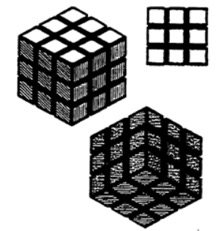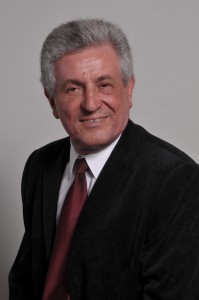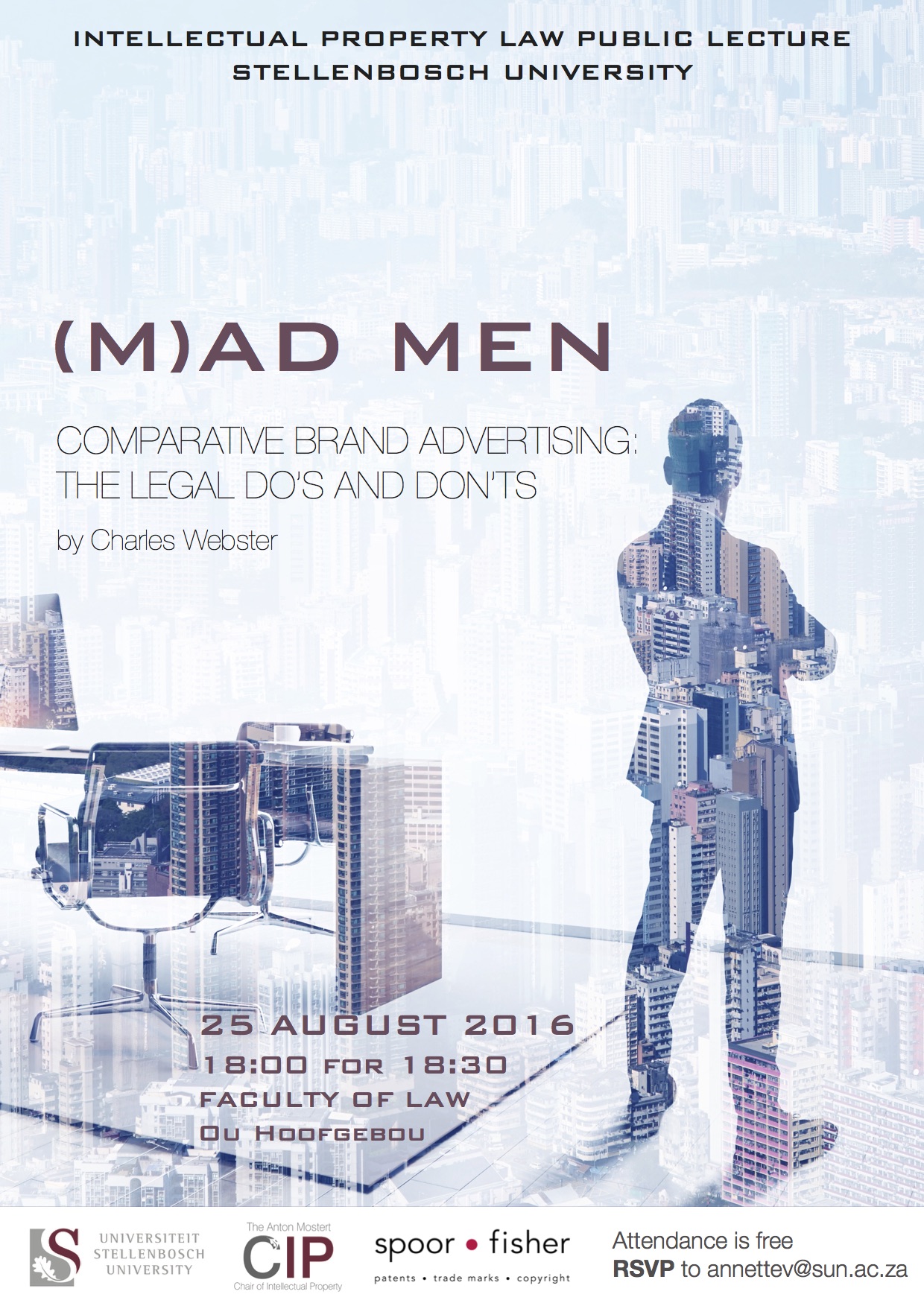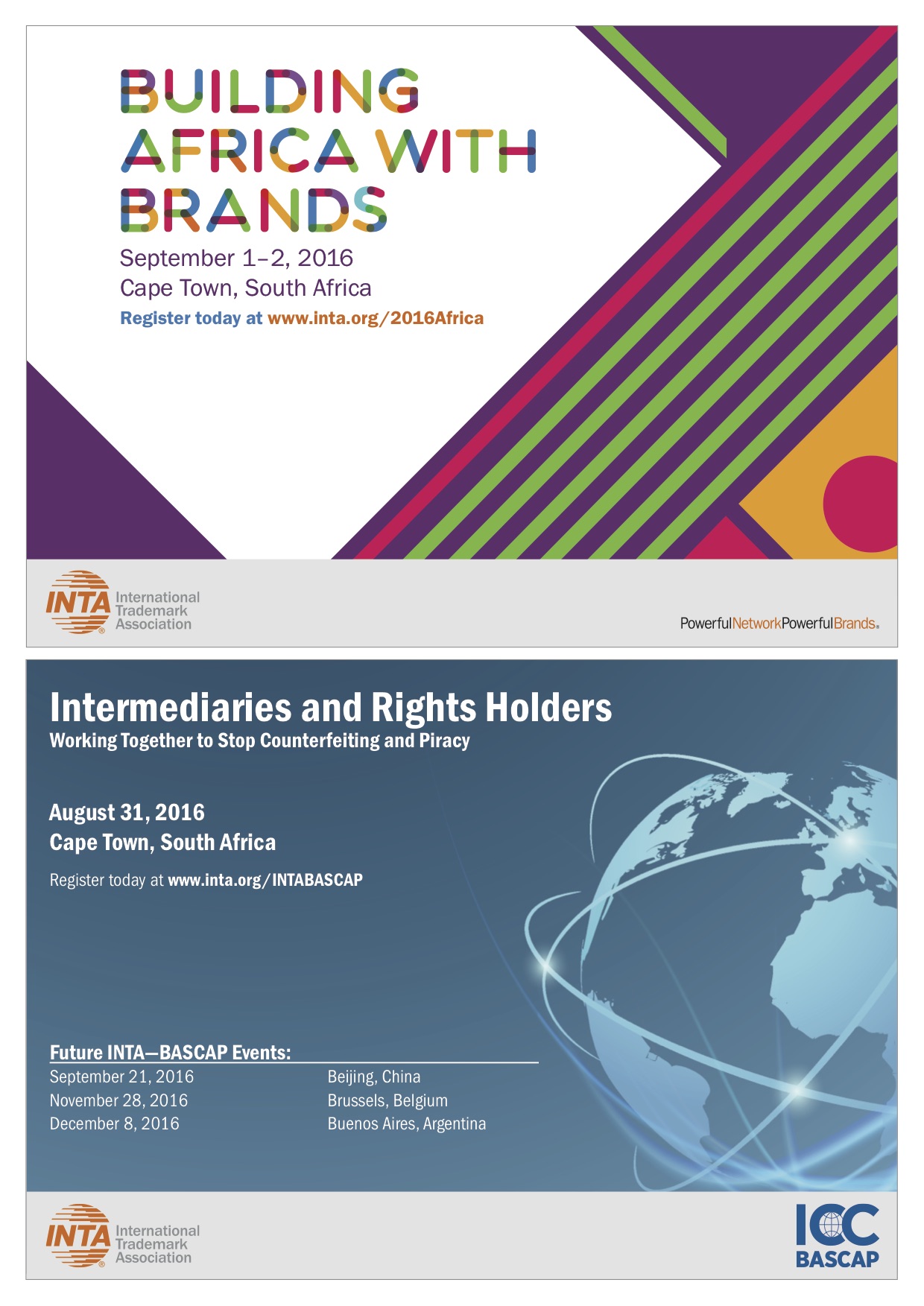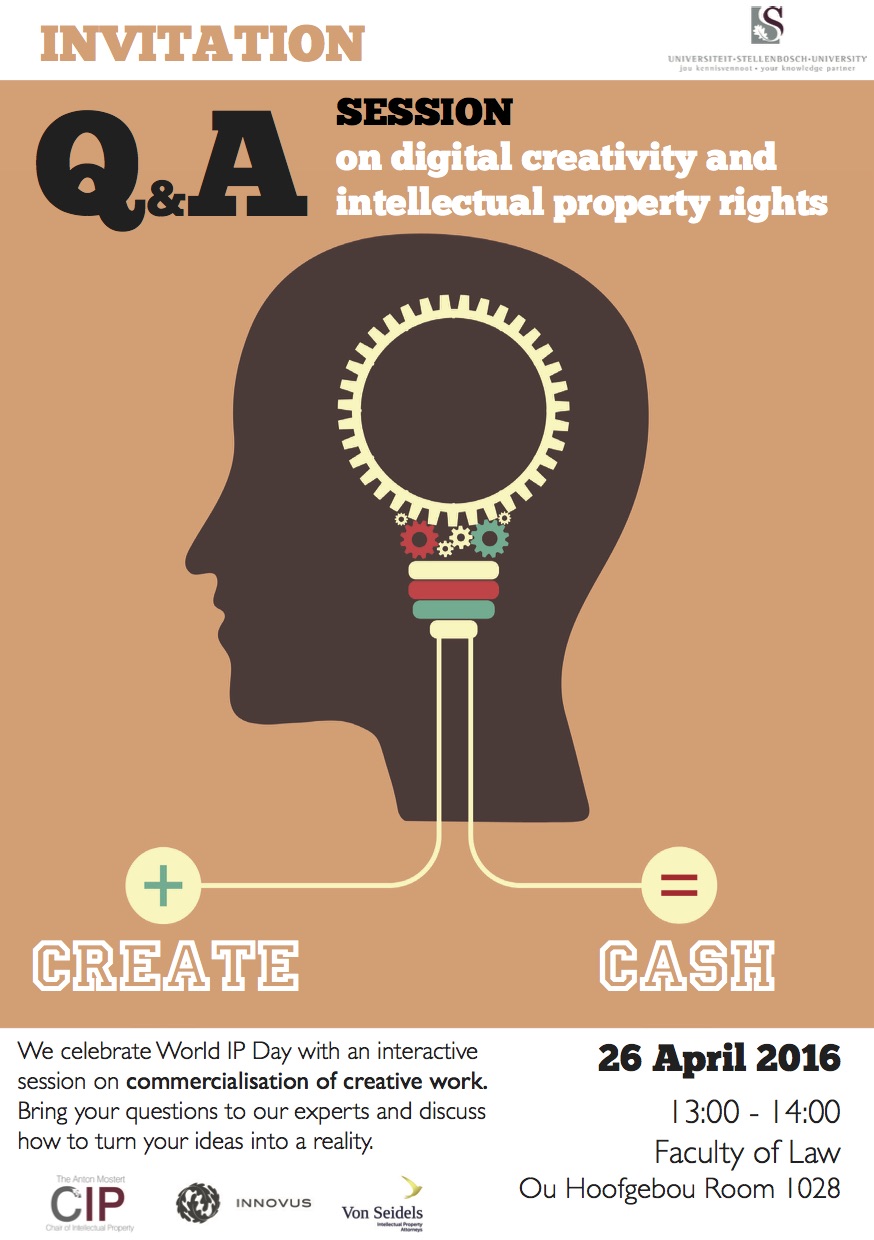Prof Karjiker’s comments on the draft the Performers’ Protection Amendment Bill [B24-2016] (the “Amendment Bill”), are submitted to the Portfolio Committee on Trade and Industry (the “Portfolio Committee”) pursuant to the invitation of the Portfolio Committee. These comments will focus on the interaction between the Performer’s Protection Act 11 of 1967 (the “Principal Act”) and the Copyright Act 98 of 1978 (the “Copyright Act”). However, the comments also raise matters of concern present in the Amendment Bill.
The full text of the comments appear below, and may be downloaded here. ![]()
1 Introduction
As a point of departure, it appears that the Amendment Bill’s proposed changes are being made to the Principal Act without regard to the amendments to the Principal Act envisaged by the Intellectual Property Laws Amendment Act 28 of 2013 (“IPLAA”).1 Is the intention that the IPLAA amendments will no longer be implemented? It is highly desirable that none of the IPLAA amendments should be implemented, and not just those which relate to the Principal Act. Thus, this is considered to be a positive development.
Accordingly, the comments below are based on the Principal Act without the amendments brought about by IPLAA.
2 Definitions
2.1 “fixation” and “audiovisual fixation”
These definitions are central to the application of the Principal Act, namely, “fixation”, “phonogram”, and “audiovisual fixation” (introduced by the Amendment Bill). Given the fact that the purpose of the Principal Act is to protect the rights of performers, the recording of a performance and exploitation of such recording should be one of the main areas of concern which the Act would seek to address. However, this concern is not consistently dealt with by the Amendment Act (and, also by the Principal Act, as it currently exists). One would expect that most provisions would seek to protect performers’ rights in relation to the exploitation of any form of recording, unless there was a specific reason for distinguishing between an exclusively aural recording, or an audiovisual recording. Thus, most provisions should simply refer to a “fixation” of a performance, which should be the umbrella term for any type of recording, be it exclusively aural recording or an audiovisual recording. In other words, if necessary, there are two subcategories of fixation, namely, a phonogram and audiovisual fixation. To this end, the existing definition of “fixation” could be amended, if desirable, by the addition of the following words “which can be perceived, reproduced or communicated by any means”. Having said that, it is not clear if a distinction between aural recordings and audivisual recordings is at all necessary. This matter need to be properly re-considered.
Subject to the aforementioned comments, the proposed definition of “audiovisual fixation” could then be simplified to read as follows: “means the visual fixation of images, by whatever means, whether or not accompanied by sounds”. Careful consideration should be given to whether the particular statutory provisions are intended to apply to fixations (that is, the recordings) generally, or specifically to phonograms or audiovisual fixations. The phrase “or by the representations thereof” in the proposed definition seems a bit odd. On this basis, the comments below will indicate some of the areas in which the particular provision shall apply to all fixations, or simply to a particular subcategory of fixation (which need, incidentally, is unclear). It may be the case, that the definitions of “audiovisual fixation” and that of “phonogram” may not be required, and that a simple reference to a form of fixation may be adequate.
2.2 “communication to the public of a performance”
Having regard to comments in paragraph 2.1 above, is there any reason why the proposed definition is limited to an audiovisual fixation? The definition could simply be in respect of a fixation, which would then cover both an audiovisual fixation and a phonogram. The definition can be amended to read as follows: “means the communication to the public by any medium, other than by broadcasting, of an unfixed performance or the fixation of a performance that members of the public may access at a place and time of their choosing, and ‘communicate to the public a performance’ shall have the corresponding meaning”.
2.3 New definition of “performance”
It would be useful to include a definition of “performance”, which could read as follows: means the physical performance by any mode of visual or acoustic presentation of a literary and artistic work and ‘perform’ shall have a corresponding meaning”.
2.4 “communication to the public of a phonogram”
See the comments in section 2.2. This definition may be unnecessary, and can, therefore, be deleted.
3 Proposed amendment to section 3
Given the fact that one of the stated objectives of the Amendment Bill is to promote performers’ moral and economic rights, the new proposed section 3(2) seems to contradict that objective. The Amendment Bill assumes that a performer may have transferred its rights terms of the Principal Act, and, on the basis of that assumption, seeks to ensure that the performer at least has some moral rights, as well as a reversionary right.2 In fact, in one material respect, the Amendment Bill appears to weaken the position of performers. Currently, the accepted view is that the rights granted to performers under the Principal Act cannot be transferred (more correctly, assigned) as the Act makes no provision for the rights granted to be transferred.3 The most obvious way to enhance the rights of performers would be to maintain the principle that the rights afforded by the Act cannot be transferred by performers.
The proposed new section 3(3) is, at best, unclear. First, although the rights granted under the Principal Act may in some respects be similar to copyright, it is not copyright. It is, thus, important to distinguish performers’ right from copyright. Second, it is submitted that the moral rights in copyright law are considered to be akin to common-law personality rights protecting honour or reputation. As such, personal rights can only be enforced by the author of the copyright work, and will, thus, terminate on the death or termination of the author.4 Accordingly, the proposed new section creates confusion. It is best not to confuse issues of copyright with that of performers’ rights, or try to oversimplify the relationship between the two concepts. For example, there would still be performers’ rights if a performer sings a song which is no longer protected by copyright, as it is in the public domain. It is also not clear whether the reference to the Copyright Act is to the general duration of copyright protection (which is potentially much longer than the term of performers’ rights) or whether it simply refers to the corresponding term for moral rights under copyright law. However, as indicated the latter is considered to terminate on death, which would defeat the purpose of trying to extend rights after a performer’s death.
Why is specific reference only made to “audiovisual fixations” (and not also to “phonograms”) in the proposed sections 3(4)(c) to (g)? See my comments in paragraph 2.1 above. The proposed sections could simply refer to “fixations”.
4 Proposed new section 3A
The initial portion (that is, the portion before the proviso) of the proposed clause appears to be of no real legal consequence. It simply says that the copyright owner of the relevant audiovisual fixation will deal with the performer’s rights in such fixation in accordance with the agreement between the parties. This would, in any event, have been the case in the absence of the provision. It’s only significance is that it stipulates that the agreement must be in writing. If that was all that was intended, the proposed section could be greatly simplified. Again, why only for an “audiovisual fixation”, and not simply for a fixation, which would also cover a phonogram, as indicated in paragraph 2.1?
The proviso is also problematic. It suggests that any agreement between the relevant copyright owner and performer will only last for a period of 25 years from the date of the commencement thereof. First, the proposed section contemplates that such agreement may have concerned a transfer of the performer’s rights to the copyright owner. In such a situation, there would be no agreement to speak of after 25 years, as the transfer effectively ends the relationship between the performer and the copyright owner. Second, even if the aforementioned characterisation is incorrect, the section does not indicate what would happen to the performer’s rights after the 25-year period. Is the intention that in those circumstances the performer’s rights would revert to the performer? Again, the phrase “and maybe novated by mutual consent” adds nothing of substance to the legal issues at hand.
5 Proposed new section 3B
In the proposed subsection 1, the problem is that the term “producer” is undefined. This creates confusion as it is not clear what the intention is. For example, if the intention is that the copyright owner of the “phonogram” (which, incidentally, is not a term used in the Copyright Act) should be the “producer”, the proposed section should dovetail with the Copyright Act. The Copyright Act defines the “author” of a “sound recording” (which is what phonogram would probably be) as “the person by whom the arrangements for the making of the sound recording were made”.
Guidance should be provided as to whether the term “producer” is considered to be the same as the “author” (or even the “owner”) under the Copyright Act, or whether there may be a distinction between the two concepts. If it is the latter case, what if there is a dispute between the “producer” and the copyright owner (or author) of the phonogram? What if the copyright owner wishes to commercially exploit the phonogram but the producer refuses to consent to such exploitation? Will this not introduce another layer of complexity? A way should be found to avoid too much fragmentation of rights. For example, the copyright owner could be the agent of the other rights holders, in a manner similar to the position which currently exists between the copyright holder of a sound recording and the performer. The royalty collected pursuant to section 9A is not only for the required right to use the particular sound recording, but also discharges any obligation to pay a royalty in relation to any performers’ rights in relation to the particular sound recording.5 Thus, section 9A also provides that any performer whose performance is featured on a sound recording is entitled to a share of the royalty in relation to the playing of the sound recording.6 The Collecting Societies Regulations provide that a collecting society who represents both the performers and the copyright owners must distribute the royalties on an equal basis between such rights holders.7
If producers are also to be given rights, the entire Principal Act needs to be reconsidered to ensure that in all relevant cases the provisions cater for both the rights of the performer and producer.
Why does the proposed subsection 2 suddenly referred to the performer and the copyright owner of a phonogram? As the provision concerns the rights of producers, the failure to mention the producers seems to suggest that producers would have no economic right, given the fact that no mention is made of the producers. Thus, the interrelation between the producers, copyright owner and performer needs to be clarified. Is it really desirable that the remuneration be a matter for the Minister to determine? What is the concern for such a drastic approach? Presumably, producers, like copyright owners and performers, would generally form part of a collecting society, which would negotiate on their behalf. Even if a particular producer was not part of a collecting society, the activities of collecting societies would indicate what the usual remuneration would be in particular circumstances.
Why is specific reference only made to “phonograms” (and not also to “audiovisual fixations”)? Why should the producer (or director) of a music video not be given the same types of rights as the producer of a phonogram?
6 Proposed amendment to section 5
Why is specific reference made to “audiovisual fixations” (and not simply to “fixations”, which would also include “phonograms”) in the proposed sections 5(1)(a)(i) to (iv), and 5(1)(b)? See my comments in paragraph 2.1 above. The proposed sections could simply refer to “fixations”, without the need to also refer to “audiovisual fixations”.
In light of the definition of “communication to the public of a performance” (as suggested in these comments), it is suggested that the words “or communicated to the public” be deleted in the proposed subsection (1)(a)(i). The issue of communication to the public should be dealt with in the proposed subsection (1)(a)(vi), which should be amended to simply read: “communicate to the public a performance of that performer”.
The additional words “or performance fixed in an audiovisual fixation” in the proposed subsection (1)(a)(ii) should be deleted as they do not make sense. The fixation has already taken place, so what consent is required?
The proposed subsection (1)(a)(iv) does not make sense because, into alia, it contemplates the possible sale of the actual performer! This can hardly promote the stated objective of promoting performers’ rights. This section can be simplified to read as follows: “make available to the public, through the sale or otherwise, of copies of the fixation of a performance by such performer”.
Similarly, in the proposed subsection (1)(a)(v), it could hardly be that the original performance could be commercially rented, as opposed to a fixation thereof. Accordingly, the section could be simplified to read as follows: “commercially rent out to the public copies of the fixation of a performance by such performer”.
Presumably, the proposed subsections (1)(b)(iv) and (v) should be with respect to “fixation of the performance (or copies thereof)” as it seems nonsensical to speak about the sale or renting out of the performance, rather than to fixations thereof.
In relation to the proposed subsection (1)(1A), it is not clear why the performer (and indeed a producer, where relevant) is not also required to sign the proposal. Furthermore, this subsection has the same problems concerning unnecessary references to “audiovisual fixations” and to “original” performance. See the comments in relation to the proposed section 1(a) above.
In relation to the proposed subsection (2), it is not clear why the performer (and producer) should not be deem to have also consented to the rebroadcasting of the relevant performance. Legislation of this nature should really serve as a type of standard-form contract, and serve to reduce the transaction costs. The proposed amendment will unnecessarily increase transaction costs. Perhaps the provision should provide for a reasonable royalty to be paid for any further broadcasts, in the absence of an agreement relating to further broadcasts.
In relation to the proposed subsection (4), the phrases “copyright owner for such/the fixation” should be changed to “copyright owner of such/the fixation”.
In relation to the proposed subsection (5), the word “or” between “performer” and “owner” should be replaced with the word “and”. Again, the reference to “audiovisual fixations” should simply be to “fixations”.
7 Proposed amendment to section 8
Again, the references to “audiovisual fixations” should be omitted and there should simply be a reference to “fixations”.
In relation to the proposed section 8(2)(e), what is a “licensed dealer”? If the term is not going to be defined, it is best to simply delete the word “licensed”.
The proposed section 8(2)(f) is inappropriate, and should be deleted. It cannot apply to the performance. As indicated above, copyright is regulated by the Copyright Act, and is a distinct right. Issues of fair-dealing in the fixation should be left to be dealt with in terms of the Copyright Act, otherwise it may result in possible confusion.
In relation to the proposed section 8(3)(a), it is not clear why there should not be a general archiving right. Archiving should not affect any of the moral or economic interests at issue. In fact, archiving should not be limited to material of an “exceptional documentary character” as it would lead to uncertainty as to what would qualify under such right. Also, it often happens that material is only later considered to be significant.
8 Proposed sections 8A and 8B
The proposed amendments to the Copyright Act which would introduce these sections referred to have been the subject of significant criticism. It would be preferable if these matters are only considered once the amendments to the Copyright Act have been finalised.
9 Other issues
What if there are multiple performers in a work? How should potential problems of hold-outs concerning the exploitation of a performance (or fixation) be dealt with? Should actions approved by the majority be permitted, and bind the minority?
10 Conclusion
While it is the case that our law concerning performers’ rights needs updating, given the international developments, the aforementioned comments should provide sufficient evidence that the current draft Amendment Bill is not currently in a state to be enacted. As with the plans to amend the Copyright Act, it is important that care is taken to ensure that our legislation is the best it can be. Despite the need to update our law relating to intellectual property rights, it would be counter-productive to rush through half-baked proposals. No one should be incentivised on the basis getting legislation passed; legislation needs to be properly considered, and should only be passed if it is in the national interest.
NOTES:
1 The preamble to the Amendment Bill states that “Amendment of section 1 of Act 11 of 1967, as amended by Act 38 of 1997 and Act 8 of 2002”. No mention is made to IPLAA in the Amendment Bill.
2 See new proposed section 3A of the Amendment Bill.
3 Dean OH, Dyer A Dean & Dyer: Introduction to Intellectual Property Law (2014) OUP at 67.
4 Dean and Karjiker Handbook of South African Copyright Law (2015) 1-112.
5 Section 9A(2)(d) Copyright Act 98 of 1978.
6 Section 9A(2)(a).
7 Regulation 8(5)(b).
Written comments on the draft Performers’ Protection Amendment Bill [B24-2016]
submitted by
Prof Sadulla Karjiker
Anton Mostert Chair of Intellectual Property Law at the Faculty of Law,
Stellenbosch University

